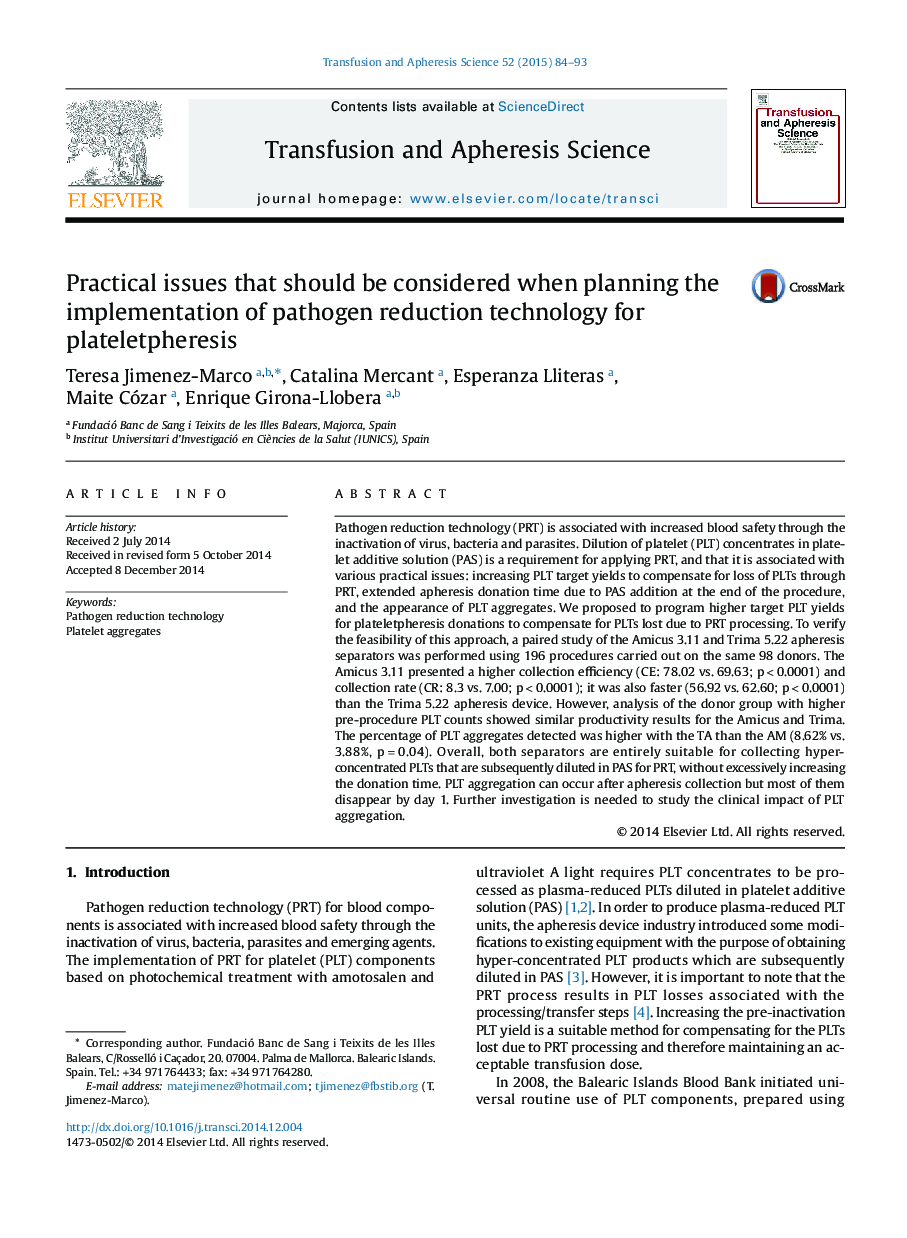| Article ID | Journal | Published Year | Pages | File Type |
|---|---|---|---|---|
| 3334922 | Transfusion and Apheresis Science | 2015 | 10 Pages |
Pathogen reduction technology (PRT) is associated with increased blood safety through the inactivation of virus, bacteria and parasites. Dilution of platelet (PLT) concentrates in platelet additive solution (PAS) is a requirement for applying PRT, and that it is associated with various practical issues: increasing PLT target yields to compensate for loss of PLTs through PRT, extended apheresis donation time due to PAS addition at the end of the procedure, and the appearance of PLT aggregates. We proposed to program higher target PLT yields for plateletpheresis donations to compensate for PLTs lost due to PRT processing. To verify the feasibility of this approach, a paired study of the Amicus 3.11 and Trima 5.22 apheresis separators was performed using 196 procedures carried out on the same 98 donors. The Amicus 3.11 presented a higher collection efficiency (CE: 78.02 vs. 69.63; p < 0.0001) and collection rate (CR: 8.3 vs. 7.00; p < 0.0001); it was also faster (56.92 vs. 62.60; p < 0.0001) than the Trima 5.22 apheresis device. However, analysis of the donor group with higher pre-procedure PLT counts showed similar productivity results for the Amicus and Trima. The percentage of PLT aggregates detected was higher with the TA than the AM (8.62% vs. 3.88%, p = 0.04). Overall, both separators are entirely suitable for collecting hyper-concentrated PLTs that are subsequently diluted in PAS for PRT, without excessively increasing the donation time. PLT aggregation can occur after apheresis collection but most of them disappear by day 1. Further investigation is needed to study the clinical impact of PLT aggregation.
